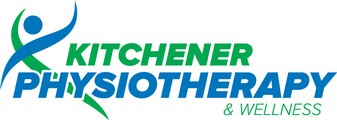Q: What's a graded functional rehab program for a spine fracture? That's what I'm headed for in the next few weeks. I kind of wanted to know what I'm getting into with this.
A: Any kind of graded exercise means you'll start out slowly and gradually increase the frequency, intensity, and duration of any exercises given. With a spine fracture, this often takes the form of spinal stabilization exercises that include the entire trunk (back and abdomen). Most rehab programs are designed, administered, and/or supervised by a physiotherapist.
In order to stabilize anything with exercise, the first step is an isometric muscle contraction. That means you will learn how to contract various individual and groups of muscles but without moving the spine. Isometric exercise allows you to tone and strengthen muscles without disrupting the healing bone.
The next step in the progression is isotonic exercises. Now you are contracting the muscles with the intent of moving some body part(s). That could mean moving the trunk in various directions (flexion, extension, rotation). The range-of-motion may be limited during this phase according to how much healing has already taken place, how stable the frature is, and the general condition of the person.
Eventually (and usually as you get closer to the time when full bone healing is anticipated -- typically, in six to eight weeks time), the exercise program becomes more functional. Now specific exercises are added to help prepare your back for the kind of conditions you might experience at work. If you sit all day at a desk in front of a computer, your occupation-specific exercises will likely be different compared with a worker with the same injury who lifts 50-pound bags, shovels grain, works construction, or even bags groceries at a store.
The therapist may use a wide range of different approaches such as Pilates, plyometrics, or bioergonomics to restore your flexibilty, mobility,strength, power, endurance, stability, and agility. Here again, the therapist will design the program for your individual needs.
Whenever possible, there is a home program portion of the rheab protocol. The more you can do at home (unsupervised), the faster your recovery will be. And there's a certain cost savings for anyone with a back injury who can complete a daily program of exercise on his/her own without constant supervision. Although you are unsupervised on a daily basis, the therapist will recheck your progress and the program weekly and make any changes needed.
Christopher S. Bailey, MD, MSc(Surg), FRCSC, et al. Comparison of Thoracolumbosacral Orthosis and No Orthosis for the Treatment of Thoracolumbar Burst Fractures: Interim Analysis of a Multicenter Randomized Clinical Equivalence Trial. In Journal of Neurosurgery: Spine. September 2009. Vol. 11. No. 3. Pp. 295-303.
WE OFFER DIRECT BILLING TO
MOST INSURANCE COMPANIES
MOST INSURANCE COMPANIES
Physiotherapy - Massage Therapy - Shockwave








